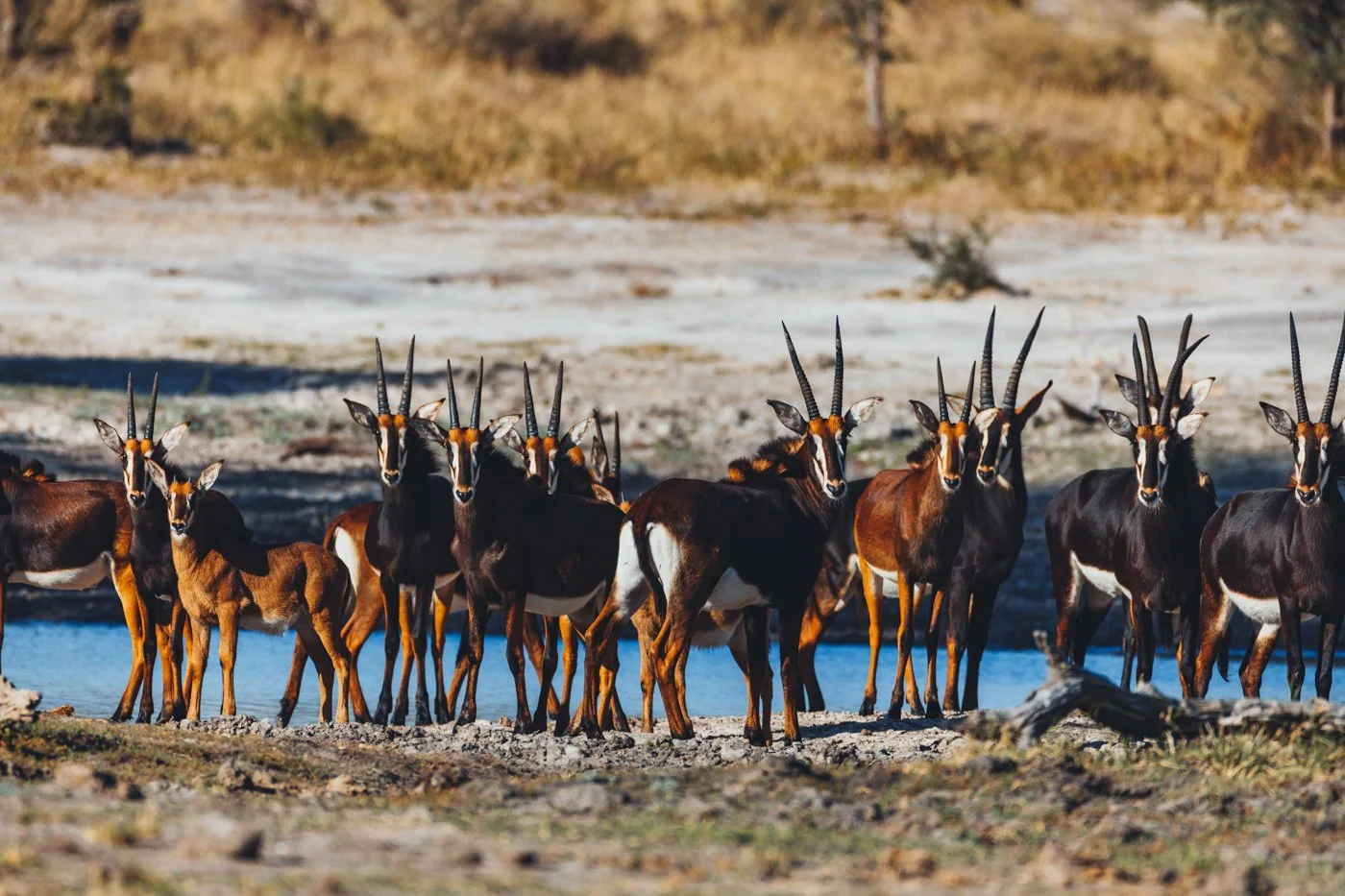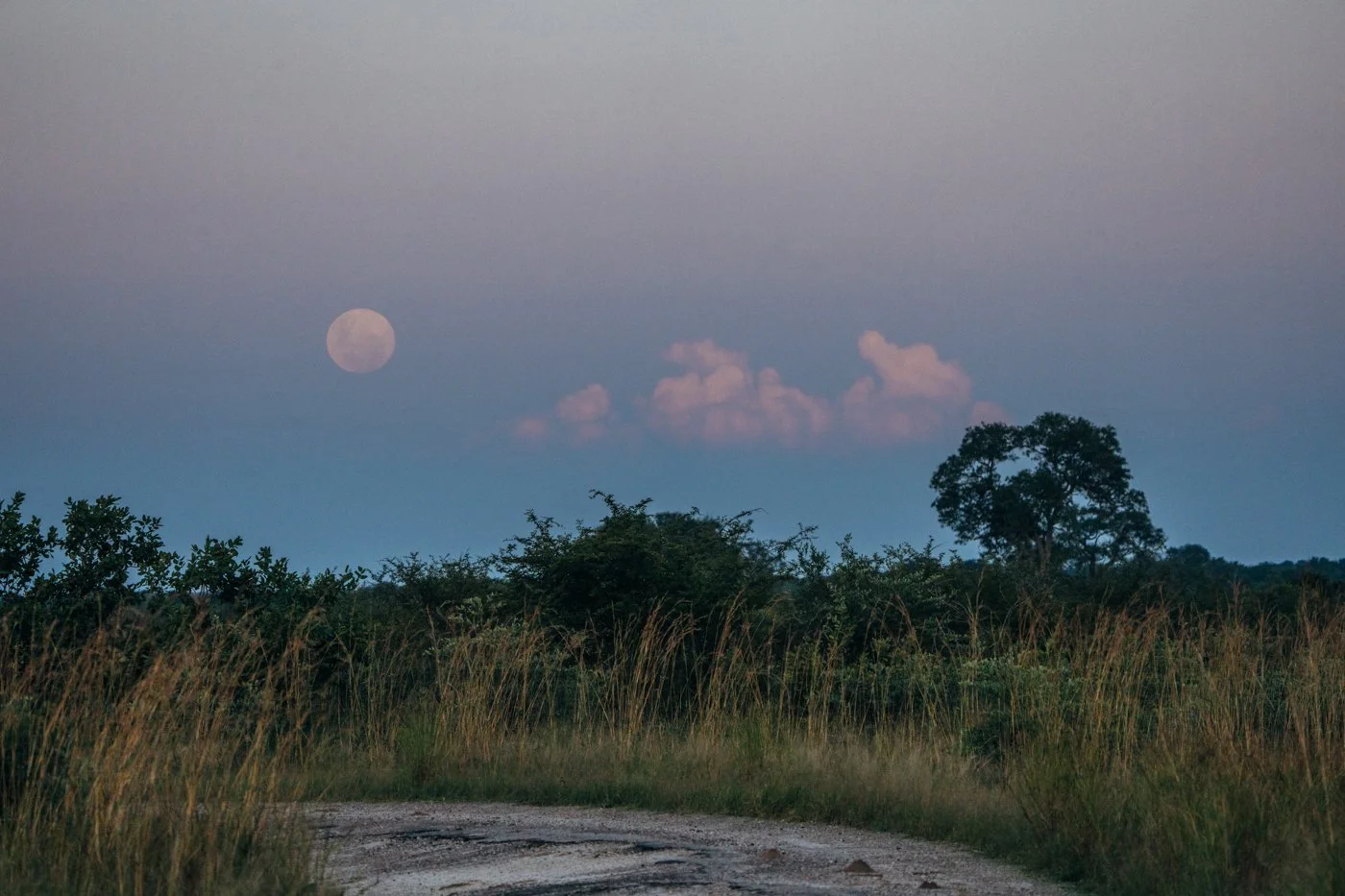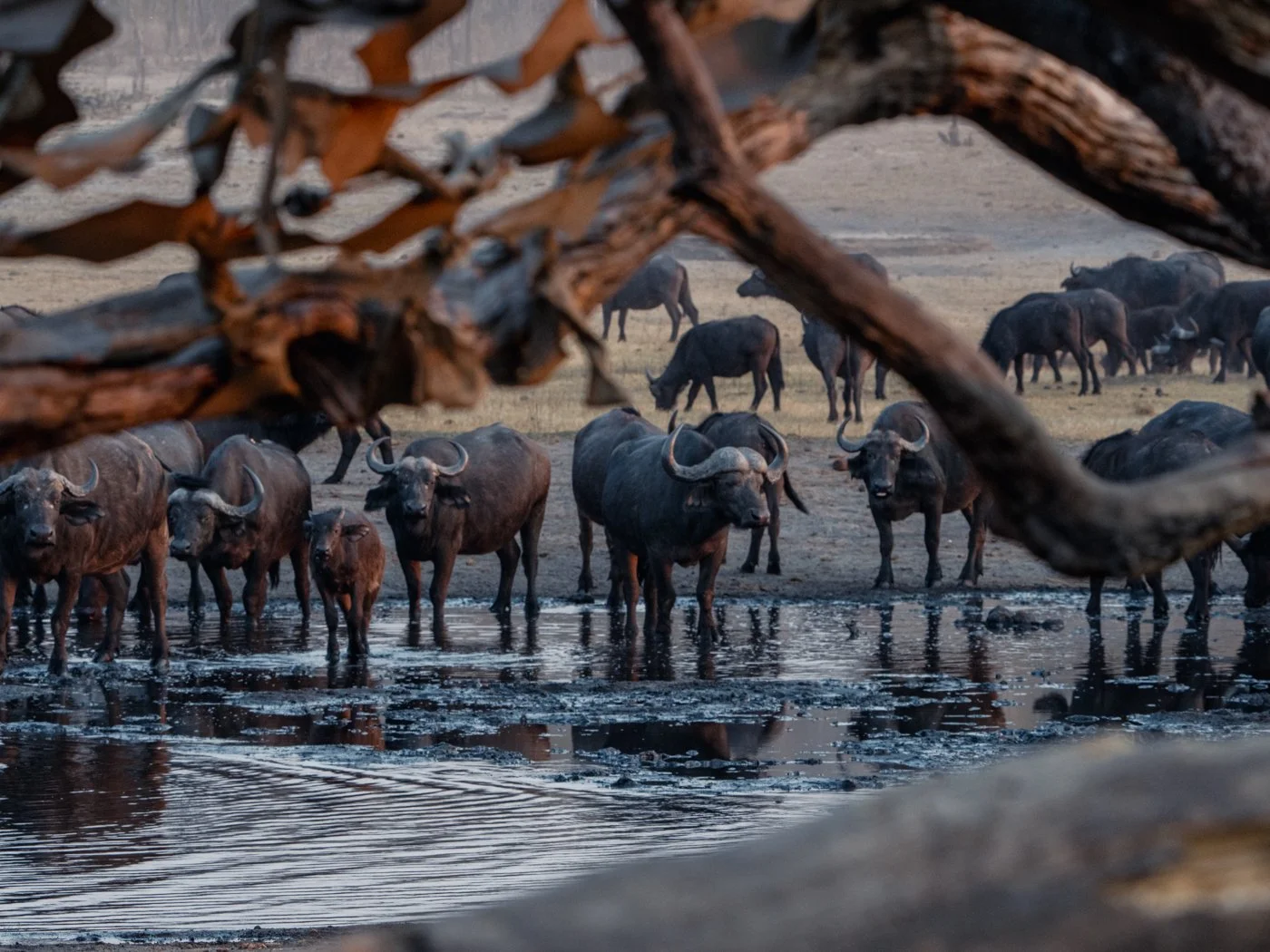Counting the Wild Under a Silver Sky: Amalinda Safari Collection’s Full‑Moon Game Census
Each October, as the dry‑season sun whitens the grasslands of western Zimbabwe, Hwange National Park undertakes a ritual older than most of the waterholes that dot its plains. For more than half a century conservation staff, scientists and volunteers have fanned out across roughly one hundred pans to record every mammal that drinks over a single 24‑hour interval. The Hwange Annual Wildlife Census is now the longest‑running game count on the continent, a living ledger that has shaped everything from bore‑hole maintenance schedules to anti‑poaching patrol routes.
In 2025 the census opened up all their pans on the private concession for the first time. Amalinda Safari Collection assigned every hide on its 15,000‑acres near Hwange’s Main Camp gate to the Official Game Count, and every seat vanished within days. To welcome the many would‑be counters left waiting, ASC devised a Full Moon Game Count to fill the void, held on the very same network of concession waterholes, their surfaces lit naturally by lunar glow. Just fifteen minutes from the park entrance, the concession delivers Hwange‑calibre wildlife encounters while keeping the entire operation on private land.
Why Counting Still Matters
Census data are far from academic footnotes. Year‑on‑year trends show how drought pushes elephants toward artificial waterholes, how predator territories shift with prey abundance and how lesser‑known species respond to habitat change. Conducted at the end of the dry season, when water sources are scarce and wildlife is concentrated, the count captures a snapshot of ecological stress that informs policy for the next twelve months. Wildlife & Environment Zimbabwe (WEZ) collates every sheet, turning nocturnal tick‑marks into management directives that ripple across 14,600 square kilometres of protected land.
For guests, the exercise reframes safari from passive observation to participatory science. Stationed at a designated pan, counters note species, herd size and arrival time, working in shifts through the night. The information helps park authorities decide which bore‑holes must run through the hottest weeks, where to place rangers during calving season and how to allocate scarce funding for water infrastructure.
A Front‑Row Seat, with Purpose
ASC’s three‑night Game Count Safari folds this research into a seamless travel itinerary: luxury rooms at Ivory Lodge, Khulu Bush Camp or Sable Valley, all meals and local drinks, daily drives before and after the census, park fees and conservation levies, and expert briefings from ASC guides trained in data protocols. Because ASC liaises directly with WEZ, participants know their observations feed the same master spreadsheet used by government scientists.
Demand, however, has become a victim of its own success. Last year every hide on ASC’s concession filled within days, prompting the company to design an additional programme that would not intrude on the core census timetable. The solution was simple: count again under the brightest nights of the lunar cycle. The result is the Full Moon Game Count Safari, offered in September, November and December, including two super‑moon sessions when Earth’s satellite appears up to fourteen per cent larger.
Moonlight as Field Equipment
Because the concession lies beyond Hwange’s formal boundary, ASC guides can operate after dark without the park’s strict curfew. Moonlight becomes the primary illumination, eliminating the need for artificial spotlights and allowing animals to approach waterholes undisturbed. The concession’s proximity to Main Camp means wildlife movements mirror those inside the park, yet visitor numbers are dramatically lower, creating a laboratory‑quiet setting for observation.
Extended hours are not merely theatrical. Species such as giraffe, sable antelope and buffalo often delay drinking until the lunar disc climbs, seeking the extra visibility that helps them scan for lions. By recording those nocturnal visits, counters add a missing chapter to Hwange’s ecological narrative, complementing the daylight data from the official census. ASC emphasises that the Full Moon count “gives guests the rare chance to contribute to real‑time wildlife data collection” while directly funding the Mother Africa Trust, the company’s not‑for‑profit arm.
The Concession in Context
Hwange’s eastern boundary merges with the teak woodlands of the Sikumi Forest Reserve, an area historically used as a buffer between national‑park land and subsistence cattle ranges. ASC’s concession occupies a swath of this forest, its pans fed by solar‑powered boreholes that keep water flowing when natural seepages dry up. The landscape is an open invitation to elephants, and on many evenings a patriarchal bull will materialise at a pan, ghost‑grey in the lunar glow, tusks catching enough light to trace an aluminium‑bright arc against the sky.
By day the count reveals a different cast. Herds of zebra and wildebeest arrive in vacillating waves, their hooves leaving chalky imprints on the pan’s salt crust. Kudu bulls step in with the deliberate pace of ballet dancers, horns spiralling like hand‑turned augers. And always the elephants: family clusters, bachelor gangs, lone matriarchs shepherding calves whose reflections wobble in the shallow water.
AT THE PANS
Participation begins with a late‑morning briefing on census procedure. Guides demonstrate how to differentiate male from female impala at distance, how to note the direction of approach and how to estimate numbers in a single glance when two hundred buffalo decide to drink at once. Once at the hide or dedicated watering hole, counters divide into four‑hour watches. The data sheet grows busier toward dusk, the pen scratching shorthand silhouettes as the bush choir swells: coughing kudu, baboon barks, the baritone rumble of distant thunder too faint yet to reach the parched plain.
Midnight often brings a stillness that feels absolute until the subtle undercurrents reveal themselves: a sandgrouse fluttering in for a sip, a civet nosing along the bank, the hum of cicadas metronoming the hours. By then the full moon hangs overhead like a paraffin lamp, bright enough to cast sharp‑edged shadows, and the importance of its light becomes self‑evident. Counters can read their clipboards without torches; predators can read the terrain.
Conservation Economics
Every guest fee underwrites conservation in three concentric circles. First, the Mother Africa Trust deploys funds to community outreach and anti‑poaching patrols. Second, census results guide the placement of those patrols, marrying data to dollars. Third, the publicity surrounding guest participation reinforces the notion that wildlife viewing and wildlife science can coincide without compromising either.
ASC argues that responsible tourism must evolve beyond game drives. “People want to leave a trace that benefits the places they visit,” says a statement in the company’s 2025 census brief. The Full Moon programme answers that desire, offering a low‑impact way to supply high‑value information for park management.
Logistics and Dates
The 2025 official count runs from 6 to 7 October, coinciding with a super‑moon that promises “excellent visibility” for night observations. The Full Moon counts follow on 6‑7 September, 4‑5 November and 4‑5 December, each operating on the same 24‑hour format. Guests may stay at Ivory Lodge, Khulu Bush Camp or Sable Valley, each offering fewer than twenty beds to keep census teams small and hides uncrowded. A three‑night minimum stay applies, and a 100‑dollar participation fee secures a clipboard and a seat at the pan.
A Different Kind of Souvenir
The hardest item to pack is patience: the discipline to sit through a stall in activity, to resist scrolling a phone, to let the rhythms of the bush set the pace. Yet those stretches of quiet amplify each new arrival: a honey‑badger trundling in with comic ferocity or a leopard gliding past like liquid shadow. By dawn, when the data sheets return to camp smudged with dust and annotated with tally marks, the guests have become archivists of a single day in Hwange’s living chronicle.
Choosing to Count
Travel often promises connection; counting delivers it in measurable form. A safari‑goer can sip a sundowner and watch a herd of elephants, or that same traveller can write “Loxodonta africana, 32” at 02:17 and know the notation will influence how many diesel drums must reach a remote pump before the next dry season. The distinction is subtle yet profound.
In Hwange, where heat and history have fused into a delicate equilibrium, such acts of attention are currency as valuable as any conservation levy. Whether under the bright austerity of an October midday or the pearl‑white glow of a super‑moon, the simple gesture of counting becomes an instrument of preservation. Amalinda Safari Collection’s initiative ensures that instrument is within reach of anyone willing to keep the night’s vigil.
Practical Information
Official Game Count: 6‑7 October 2025, with lodgings at Ivory Lodge, Khulu Bush Camp or Sable Valley
Full Moon Counts: 6‑7 September; 4‑5 November (super‑moon); 4‑5 December (super‑moon)
Location: ASC’s 15,000‑acre concession, just outside Hwange Main Camp gate, reachable in roughly 15 minutes from the park entrance
Participation Fee: 100 USD per person for the Full Moon count, in addition to accommodation
Booking: enquiries@amalindacollection.co.zw or www.amalindacollection.com.
Counting wildlife under a full moon may sound poetic, yet its purpose is deeply practical. By aligning visitor curiosity with scientific rigour, Amalinda Safari Collection has fashioned a safari that offers not just memories but metrics — not just stories but statistics — and in doing so has allowed travellers to place their footprints where they matter most: inside the data that will safeguard Hwange for the moons yet to rise.




